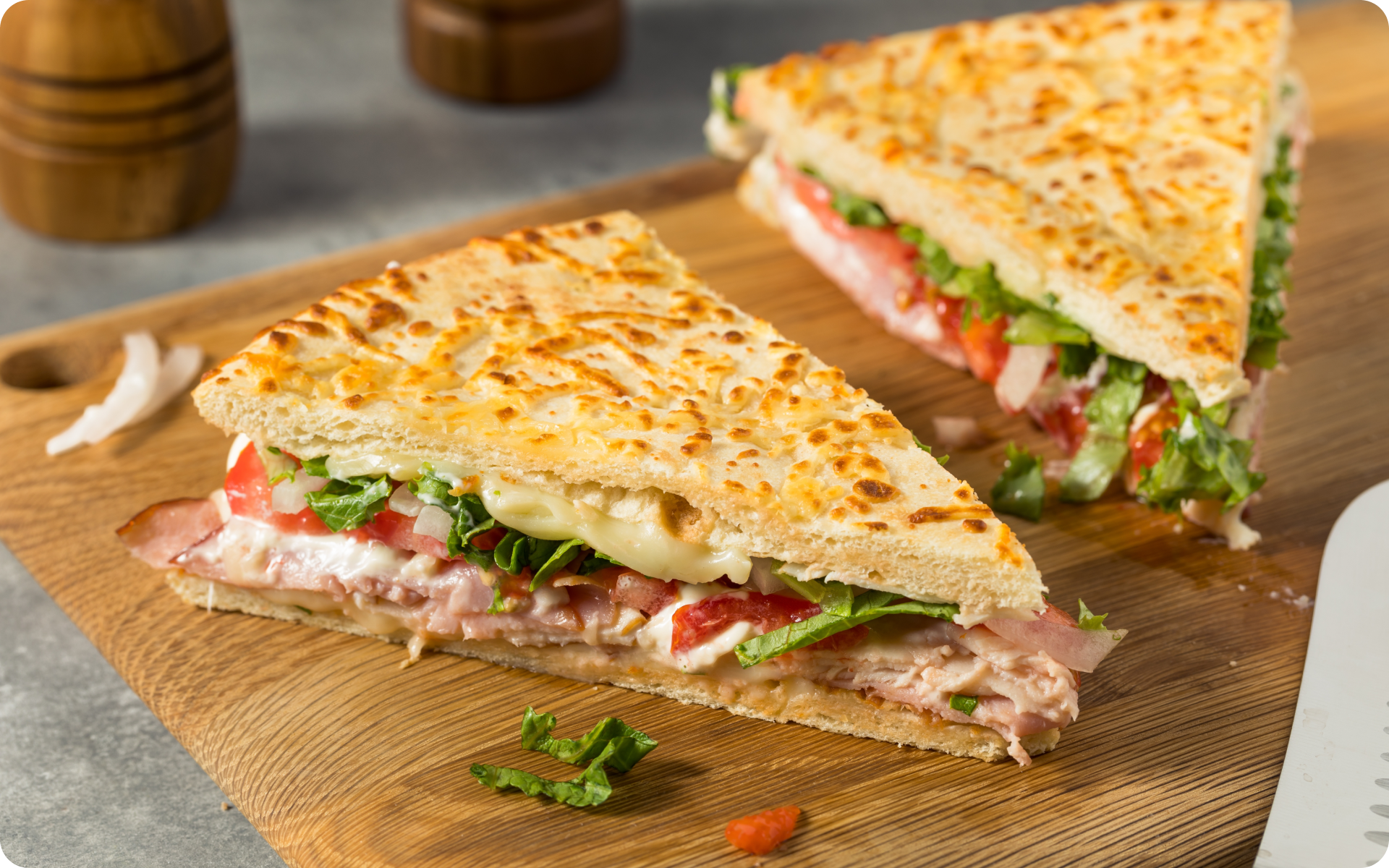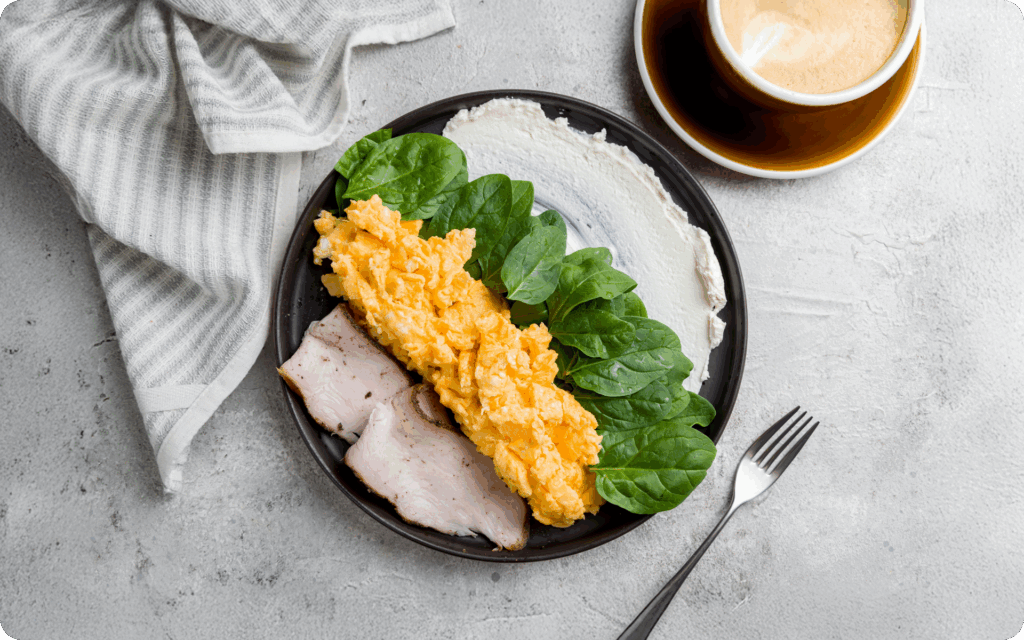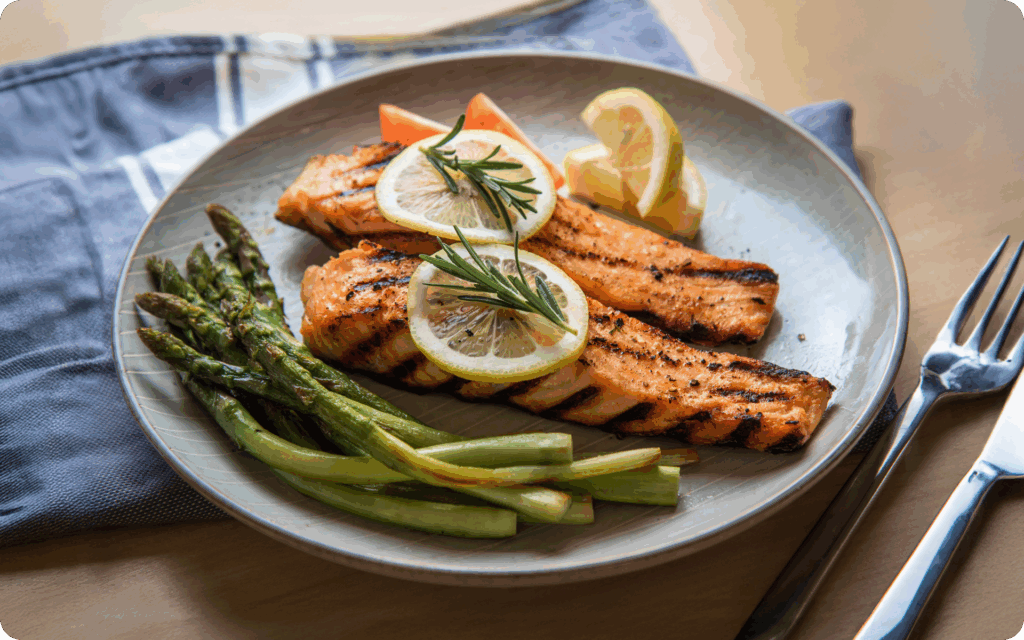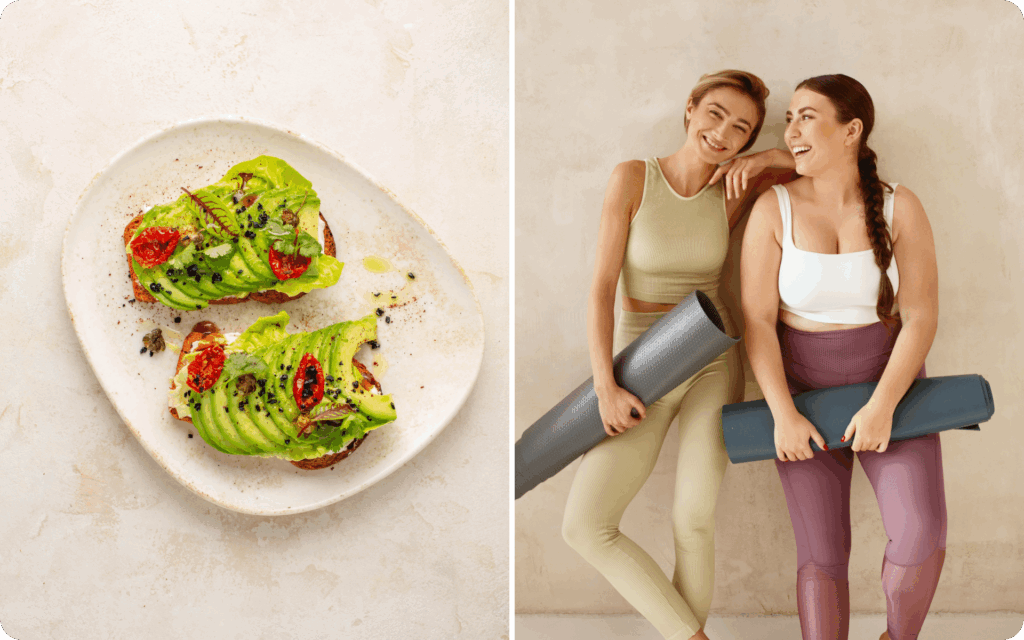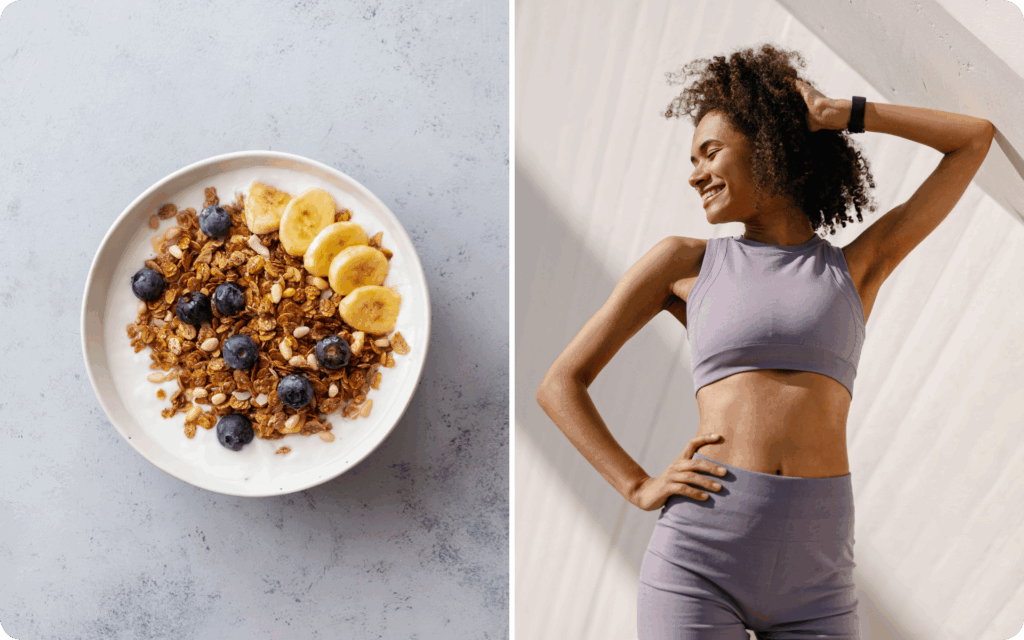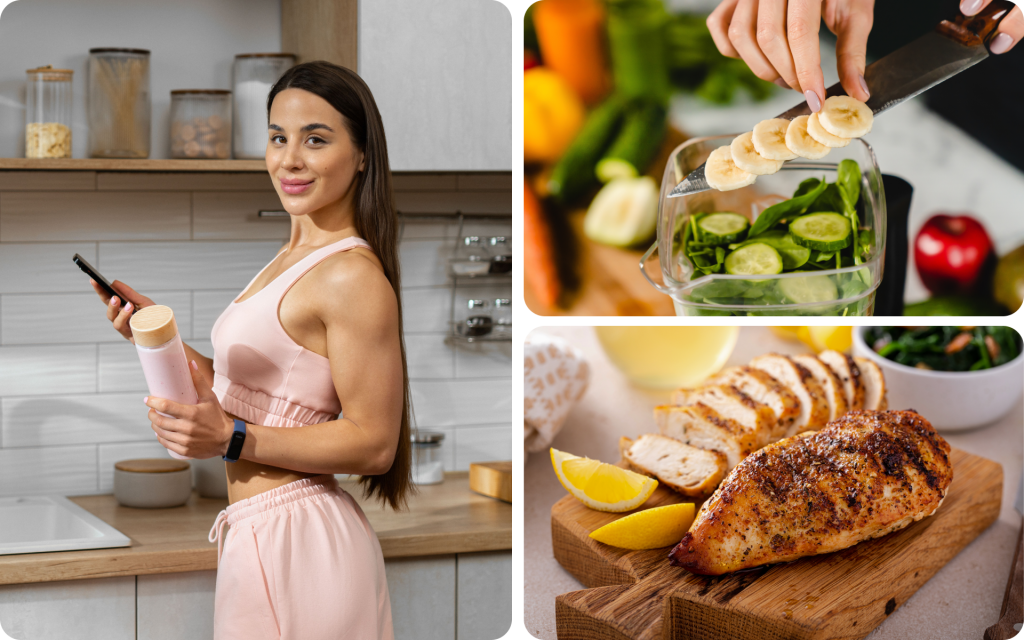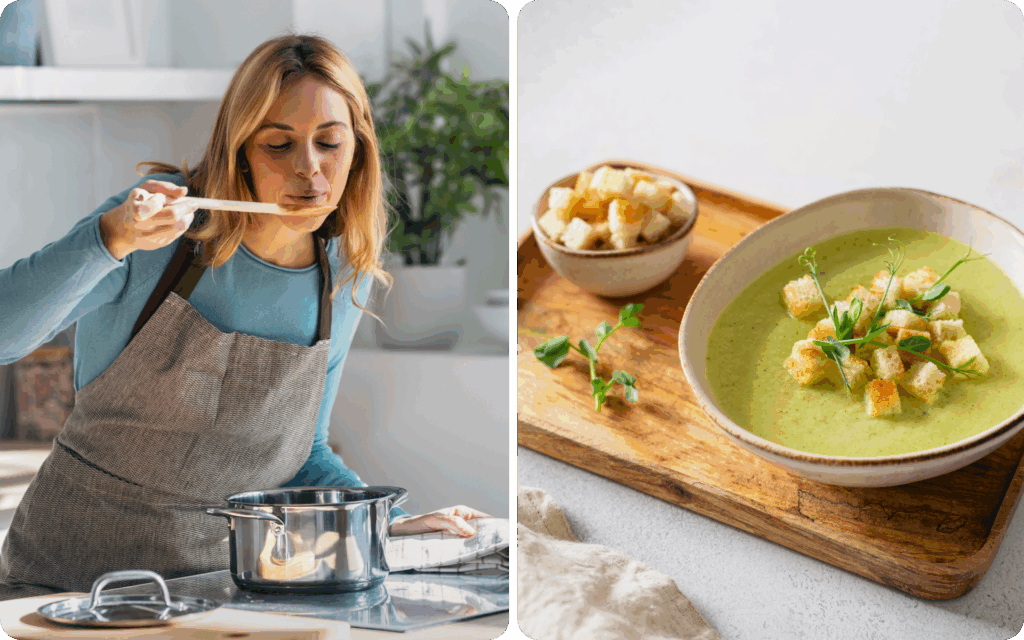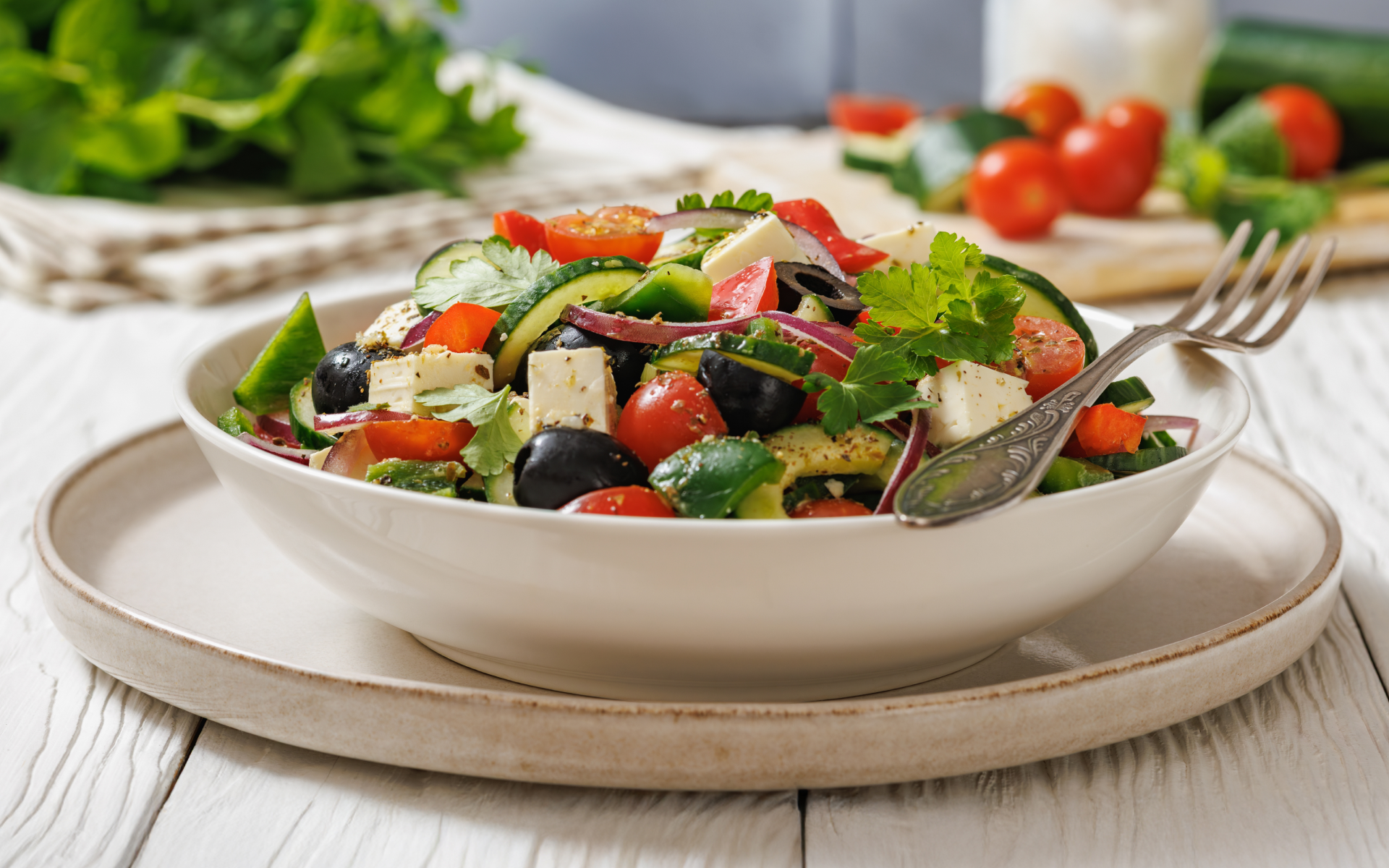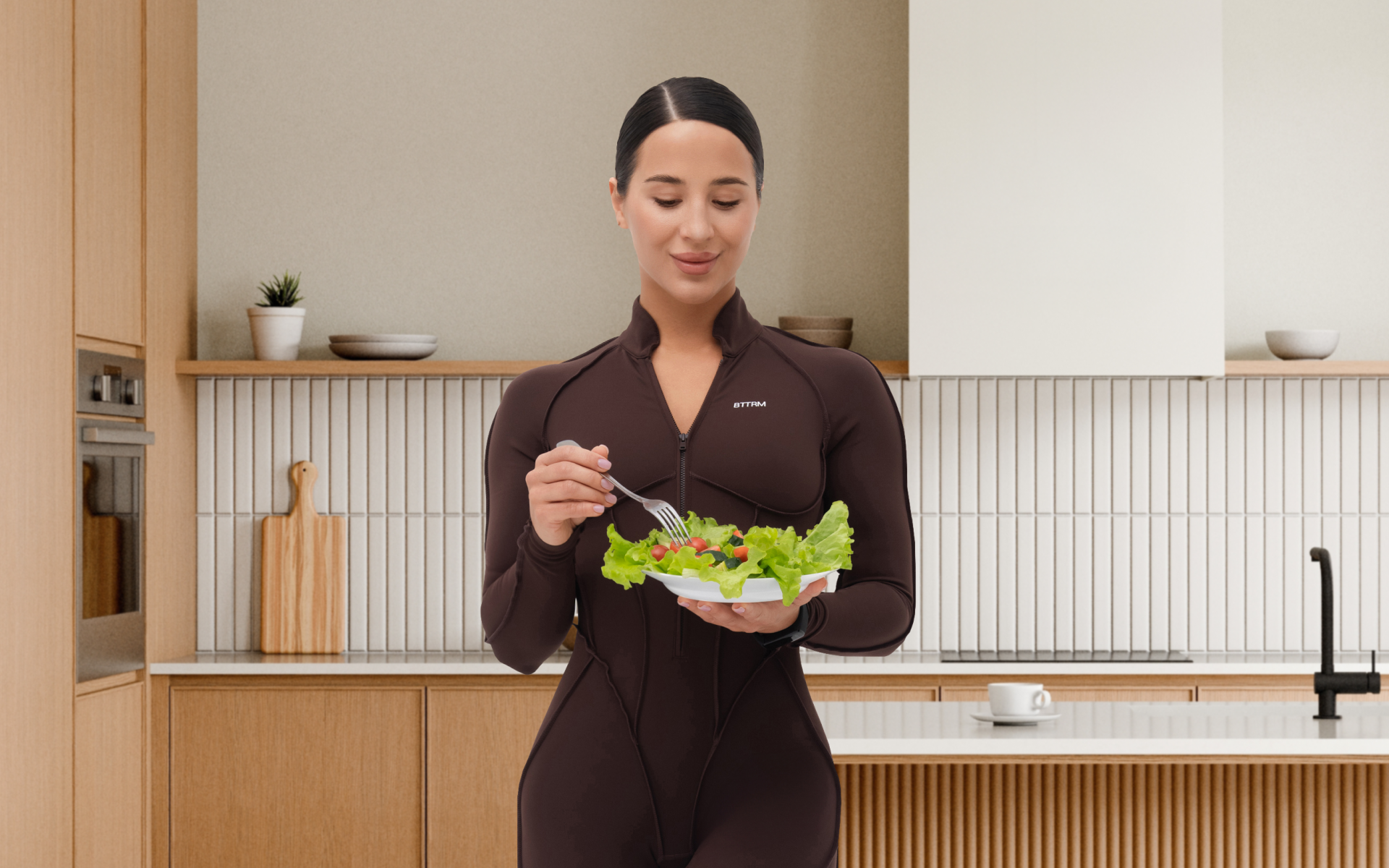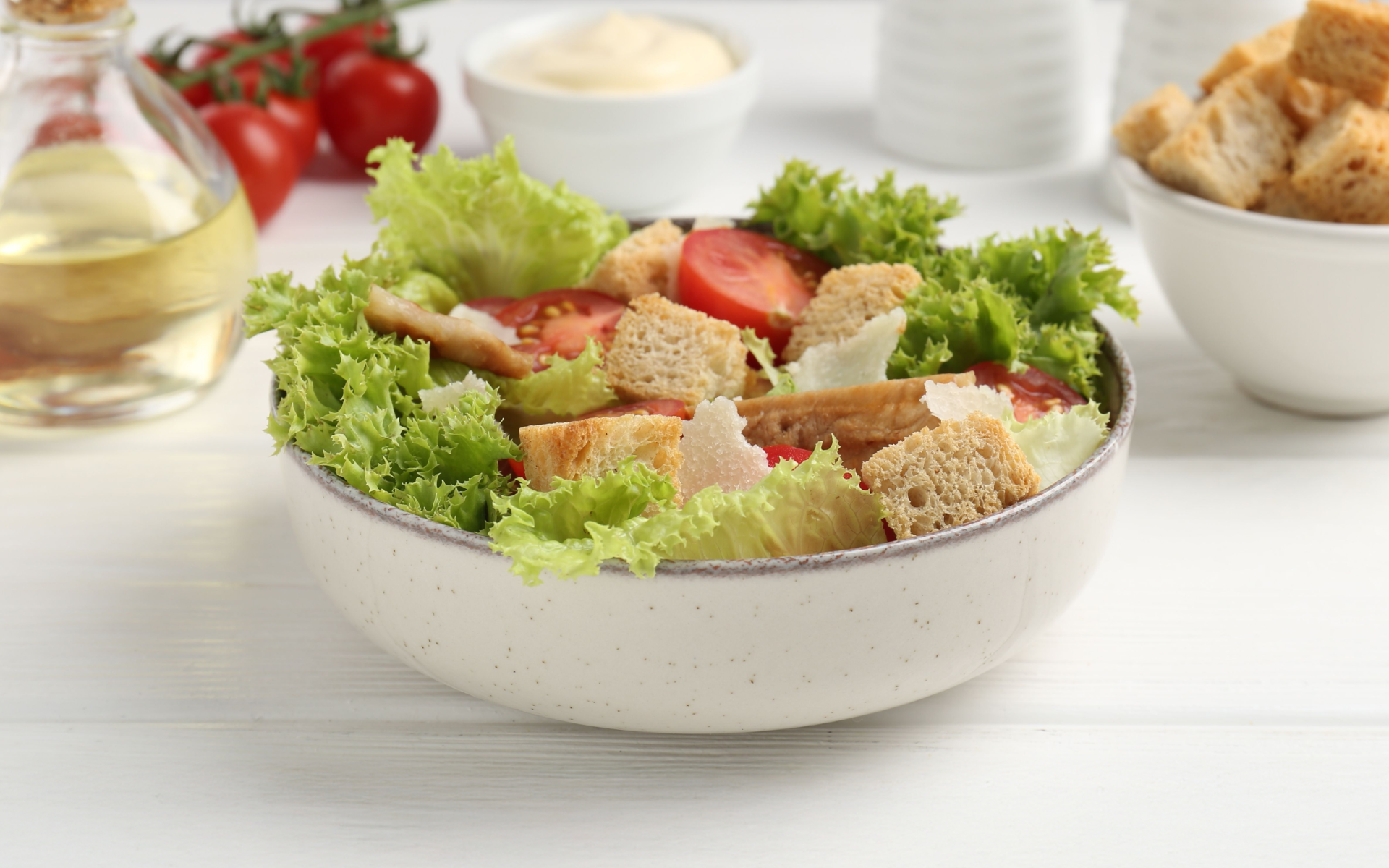When it comes to weight loss and management, a meal plan plays a crucial role in determining whether you’re going to achieve your goals, of course, with other factors such as exercise. In this post, we’ll discuss everything you need to know about an easy high-protein meal plan, the benefits, and examples you can adopt to help you manage your weight or get other benefits that come with it.
It’s important to understand that a high-protein meal plan can be beneficial in a number of ways. The meal plan is good for weight management as protein is known to suppress hunger and reduce cravings for food. This is because when you eat them, you feel full for longer. In addition, it boosts metabolism, helps build and preserve lean muscle mass, and also helps with the repair of worn-out cells and tissues.
What Is the Easiest High-Protein Meal Plan?
If you want a low-budget high-protein meal plan, here’s one that’s beginner-friendly, affordable, and comprised of the foods that you can easily find.
5-Day Easiest High-Protein Meal Plan Example
Day 1
- Breakfast – spinach and whole-grain toast with scrambled egg
- Lunch – quinoa and steamed broccoli with grilled chicken breast
- Dinner – sweet potatoes with baked salmon and green beans
- Snack – almonds and Greek yogurt
Day 2
- Breakfast – sliced bananas with chia seeds and cottage cheese
- Lunch – tuna salad with mixed vegetables
- Dinner – brown rice with some mixed green vegetables and stir-fry tofu
- Snack – carrot sticks and boiled egg
Day 3
- Breakfast – smoothie made from peanut butter, banana, protein powder, and milk.
- Lunch – turkey wrap with lettuce and hummus
- Dinner – cauliflower rice and bell peppers with beef stir-fry
- Snack – roasted chickpeas
When it comes to weight loss, progress is made by inches, not miles, so it’s much harder to track and a lot easier to give up. The BetterMe: Health Coaching app is your personal trainer, nutritionist, and support system all in one. Start using our app to stay on track and hold yourself accountable!
Day 4
- Breakfast – oatmeal with blueberries and protein powder
- Lunch – whole-grain bread with lentil soup
- Dinner – grilled shrimp and steamed vegetables
- Snack – apple slices with low-fat cheese
Day 5
- Breakfast – avocado and tomato slices with hard-boiled eggs
- Lunch – steamed vegetables and noodles with stir-fry chicken
- Dinner – mashed peas with steamed vegetables and baked salmon
- Snack – roasted edamame and walnuts
Is a High-Protein Diet Easy to Follow?
Yes, a high-protein diet can be easy to follow for some people, but can also be challenging for some people. The ease depends on individual food preferences and lifestyle.
If you already enjoy protein foods such as fish, eggs, chicken, lentils, and beans, then it should be easy to follow a high-protein diet. What also makes this meal plan easy to follow is the fact that it reduces cravings for snacks as it keeps you full for longer.
So, to make it easy to follow, you need to keep it realistic and with simple recipes that are also easy to prepare.
Read more: High-Protein Low-Fat Meal Plan: Is Weight Loss Possible?
How Much Protein Do You Really Need Daily?
You need at least 0.8g of protein per kilogram of your body weight daily (1). This applies to sedentary adults as other factors may affect the amount of protein you need on a daily basis. Some of the factors that affect the amount of protein that you need daily include the following:
- Body Weight
As mentioned above, the protein you need is dependent on your body weight. The more body weight you have, the higher the amount of protein you need. Of course, weight is a factor when it comes to calculating the total amount of protein you should eat. Our previous post goes into great detail about the high-protein meal plan for women.
- Physical Activity
Your level of physical activity also affects how much protein you need. We mentioned that you need 0.8g of protein per body weight, but that applies to a sedentary lifestyle. Therefore, you may need more protein with more physical activity.
- Age
Children need more protein to support their growth and development. Older adults also need more protein to maintain their muscle mass. Therefore, the amount of protein intake is dependent on the age of the individual. Certain conditions, such as pregnancy or illness, can also increase protein needs.
- Overall Calorie Intake
If you’re losing weight or on a calorie deficit, you need more protein to help you maintain muscle mass. This is particularly important for people who are pursuing weight loss goals in preventing muscle loss that would otherwise result when on a calorie deficit and low protein intake. Strength training goes hand in hand with protein intake for building or maintaining muscle mass – the exercise provides the stimulus, and the protein provides the building blocks.
What Is an Easy Way to Eat High Protein?
If you want to lose some weight and are looking for an easy way to eat high-protein, there are a lot of ways you can eat them without struggle. Of course, when you switch from what you normally eat or avoid some foods that you’re used to, you may develop some cravings or struggle to adapt.
The good thing with protein is that it will keep you full for longer to avoid the cravings that would otherwise lead you to snacking or indulging in foods that may not be high in protein. Some of the ways of eating high-protein easily without struggle include the following:
Consider Protein in Every Meal
Whether it’s breakfast, lunch, or dinner, ensure each meal contains some high-protein sources such as eggs, chicken, tuna, turkey, fish, lentils, beans, tofu, tempeh, Greek yogurt, cottage cheese, nuts, and seeds.
High-Protein Snacks
Your snacks are also part of your daily diet and you can use them to help boost the amount of protein you eat per day. In your snacks, consider protein sources such as hard-boiled eggs, protein-rich Greek yogurt, cheese cubes and sticks, roasted chickpeas, peanuts, and almonds.
Protein-Rich Add-ons
You should also consider some of the protein-rich add-ons such as protein powders, a sprinkle of chia seeds or hemp seeds, beans or lentils, or peanut and almond butter.
Weekly Meal Preparation
Instead of deciding and preparing each meal daily, it’s easier if you do prep for the entire week. You can cook and store your food for the entire week. For example, you can grill your chicken or prepare your beans in advance, then store them in appropriate containers or refrigerate them.
Stock Your Kitchen
You also need to stock your kitchen in advance with protein-rich sources, particularly the staples such as chicken, turkey, eggs, milk, fish, yogurt, and cheese. Some plant-based protein-rich to also stock include beans, lentils, tofu, edamame, nuts, and quinoa. This makes it easy to eat protein every day.
Use Protein-Rich Substitutes
Using protein substitutes can also help you achieve your protein intake target daily. For example, instead of white rice, you can replace it with quinoa, and instead of regular pasta, you can use chickpea or protein-enriched pasta. Just consider substitutes for foods that aren’t rich in protein that you regularly eat or enjoy.
What Is an Easy High-Protein Meal Plan for a Week?
An easy high-protein meal plan can mean one that is easy to prepare, has easy-to-find ingredients, and is flexible and budget-friendly. Here’s an easy high-protein meal plan sample that will take you through a week:
Day 1
- Breakfast – Greek yogurt with oats, berries, and chia seeds.
- Lunch – Grilled chicken breast with brown rice and steamed broccoli.
- Dinner – Baked tilapia with some sweet potatoes and spinach.
- Snack – hard-boiled eggs.
Day 2
- Breakfast – whole-grain toast with spinach and scrambled eggs.
- Lunch – tuna salad with avocado slices and chickpeas.
- Dinner – beef stir-fry with steamed vegetables and brown rice.
- Snack- sliced apples with cottage cheese.
Day 3
- Breakfast – scrambled eggs with sweet potato hash, spinach and avocado.
- Lunch – whole-grain toast with tuna salad and olive oil dressing.
- Dinner – sautéed green beans with mashed cauliflower and grilled tilapia.
- Snack – roasted edamame or chickpeas.
The BetterMe: Health Coaching app will provide you with a host of fat-frying fitness routines that’ll scare the extra pounds away and turn your body into a masterpiece! Get your life moving in the right direction with BetterMe!
Day 4
- Breakfast – oats, eggs, and protein pancake.
- Lunch – lentil soup with chicken and side salad.
- Dinner – farro with baked tofu and steamed vegetables.
- Snack – apple and cheese slices.
Day 5
- Breakfast – protein smoothie (protein powder, almond milk, spinach, and banana).
- Lunch – quinoa and grilled chicken salad with lemon and mixed vegetables.
- Dinner – roasted potatoes with lean pork chops and green peas.
- Snack- pineapple slices with cottage cheese.
Day 6
- Breakfast – scrambled eggs and sliced avocado with whole-grain toast.
- Lunch – kidney bean and turkey chili with corn muffin.
- Dinner – wild rice with grilled shrimp and steamed broccoli.
- Snack – protein shake.
Day 7
- Breakfast – Greek yogurt with berries and granola.
- Lunch – baked chicken breast with mixed vegetables and lentil salad.
- Dinner – beef and vegetable stew over mashed potatoes.
- Snack – roasted nuts and seeds.
For more details about weekly high-protein meal plan, take a look at our prior publication.
Read more: High-Protein Low-Calorie Diet Meal Plan: Principles, Foods, And Safe Implementation
What’s the Simplest High-Protein Dinner?
The simplest high-protein dinner is one that is simple to prepare, contains high protein, is rich in nutrients, and with minimal preparation and cleanup. An example of a simple high-protein dinner is baked salmon with steamed vegetables and wild rice. Of course, there are a variety of other simple options you can think of. Other great protein options include chicken breast, tofu, pork tenderloin, or lentils. Choose your protein, then add a whole-grain product (or starchy vegetable) and at least one non-starchy vegetable, and you’ve got a complete meal. Here’s an example and what you need:
Grilled Chicken with Steamed Broccoli and Quinoa
For this meal, you’ll need few and simple ingredients that are common and easy to find – chicken breast, steamed broccoli, cooked quinoa, and other ingredients like olive oil, garlic, bell pepper, salt, and onions.
The cooking and prep process is also easy and simple. In addition to the simplicity, the diet is rich in all kinds of nutrients that your body needs.
When you’re looking for an easy or simple high-protein dinner, you need to keep the following in mind:
- Protein Source and Quality
Choose healthy and clean protein sources such as lean meats, eggs, chicken breast, and turkey breast. Also consider adding plant-based protein options such as beans, lentils, and tofu.
- Consider Simplicity
A meal that’s easy to prepare should take you less time to prepare. Therefore, you need to opt for ingredients that don’t take too much time to cook.
- Food Prep Potential
Also consider some foods that you can cook in bulk. This is a particularly good idea if you’re doing meal prep for the whole week. Examples include brown rice, chicken, boiled eggs, and lentil stew.
- Include Variety
While you’re keeping it simple, you don’t want to have a nutrient imbalance at the end. Therefore, you need to mix it up to ensure your overall diet is rich in all the nutrients your body needs.
- Availability of the Ingredients
A meal plan for your dinner can’t be simple if you don’t have all the ingredients with you. Don’t make it complicated with ingredients you can’t afford or find easily. Where necessary, substitute the ingredients with other healthy ones that serve the same purpose.
What’s an Easy Way to High-Protein Meal Prep?
High-protein meal prep can be a challenging task, especially if you’re doing meal prep for the whole week. You need to get all the ingredients you need and prepare them in advance. If you’re doing it for a single meal, that can be easy, but you need to consider these guidelines:
Select Protein Sources
You need to pick your proteins in advance and ensure they’re all healthy options. When picking your protein, you need to diversify your sources to ensure it includes both plant-based and animal sources. Some of the proteins to include are:
- Lean meats – lean cuts of meat, chicken breast, and turkey breast.
- Fish and seafood – tuna, salmon, tilapia, and shrimp.
- Plant-based – legumes (beans, peas, and lentils), tempeh, and tofu.
- Eggs and dairy – Greek yogurt, eggs, and cottage cheese.
Batch Cooking
As mentioned, if you’re doing meal prep for the whole week, you can batch cook or cook your proteins in bulk. Some of the foods you can cook in bulk include chicken, turkey, and beef. Also cook a variety of vegetables that will pair with the protein sources and also cook some carbohydrate bases such as quinoa and brown rice in bulk. If you’re curious about 30-minute high-protein meals, check out our earlier article.
Store Your Prepared Ingredients
Once your ingredients are cooked and ready, you can store them in airtight containers in the fridge so they remain fresh for the entire period. You may need to freeze some if you’re going to prep for a week.
Proper Assembly
You also need to assemble your ingredients based on how you will cook them to avoid taking too much time when retrieving them. You need to keep the ingredient categories separate for easy identification. For example, you can keep the sauces, bases, and main ingredients separately.
Getting Ingredients in Advance
When you have the ingredients with you, everything becomes easier than when you have to source different ingredients in different places. Therefore, you need to ensure you have all the required ingredients for your entire meal plan in advance.
An easy high-protein breakfast could be no-cook options such as a Greek yogurt bowl, protein smoothie, cottage cheese, or overnight oats. Others include quick-cook options such as fried or scrambled eggs and tofu scrambl Cow’s milk contains about 8 grams of protein per cup, but the protein content of cereal with milk will vary based on the cereal. Many breakfast cereals are low in protein, but if you choose cereals that are high in protein, then add milk and other protein ingredients such as nuts and seeds to make it a high-protein meal for breakfast. If you use plant-based milk alternatives, choose one with added protein. You can add protein to oatmeal without using powder by using milk in place of water and then stirring in some cottage cheese, nut butter, or Greek yogurt. Then you can add nuts and seeds such as chia seeds, almonds, or hemp seeds. Yes, you can build muscle with easy meals, as long as you meet the nutritional requirements and with some training. You need to eat enough calories with sufficient protein of about 1.6 – 2.2g per kg of body weight per day and combine this with resistance exercises such as using heavy weights (2). Frequently Asked Questions
What’s an easy high-protein breakfast?
Is cereal with milk a high-protein breakfast?
How can I add protein to oatmeal without powder?
Can I build muscle with just easy meals?
The Bottom Line
With this guide, you have a great choice of foods and sample recipes you can use to make an easy high-protein diet. It’s important to ensure that your meals have adequate protein from both animal and plant-based sources, and other macro and micro nutrients your body needs.
As mentioned, a high-protein diet goes beyond the standard dietary protein allowance of 0.8g per kilogram of body weight. High-protein diets are great if you want to lose weight. It’s also important to moderate your portions, particularly if you want to lose weight, as that can add on calories. And as mentioned, a high-protein diet is not only effective for weight loss, but also for maintaining or growing muscle mass, and for supplying the body’s energy needs. When it’s balanced, it’s the best for the overall health and well-being of your body.
DISCLAIMER:
This article is intended for general informational purposes only and does not serve to address individual circumstances. It is not a substitute for professional advice or help and should not be relied on for making any kind of decision-making. Any action taken as a direct or indirect result of the information in this article is entirely at your own risk and is your sole responsibility.
BetterMe, its content staff, and its medical advisors accept no responsibility for inaccuracies, errors, misstatements, inconsistencies, or omissions and specifically disclaim any liability, loss or risk, personal, professional or otherwise, which may be incurred as a consequence, directly or indirectly, of the use and/or application of any content.
You should always seek the advice of your physician or other qualified health provider with any questions you may have regarding a medical condition or your specific situation. Never disregard professional medical advice or delay seeking it because of BetterMe content. If you suspect or think you may have a medical emergency, call your doctor.
